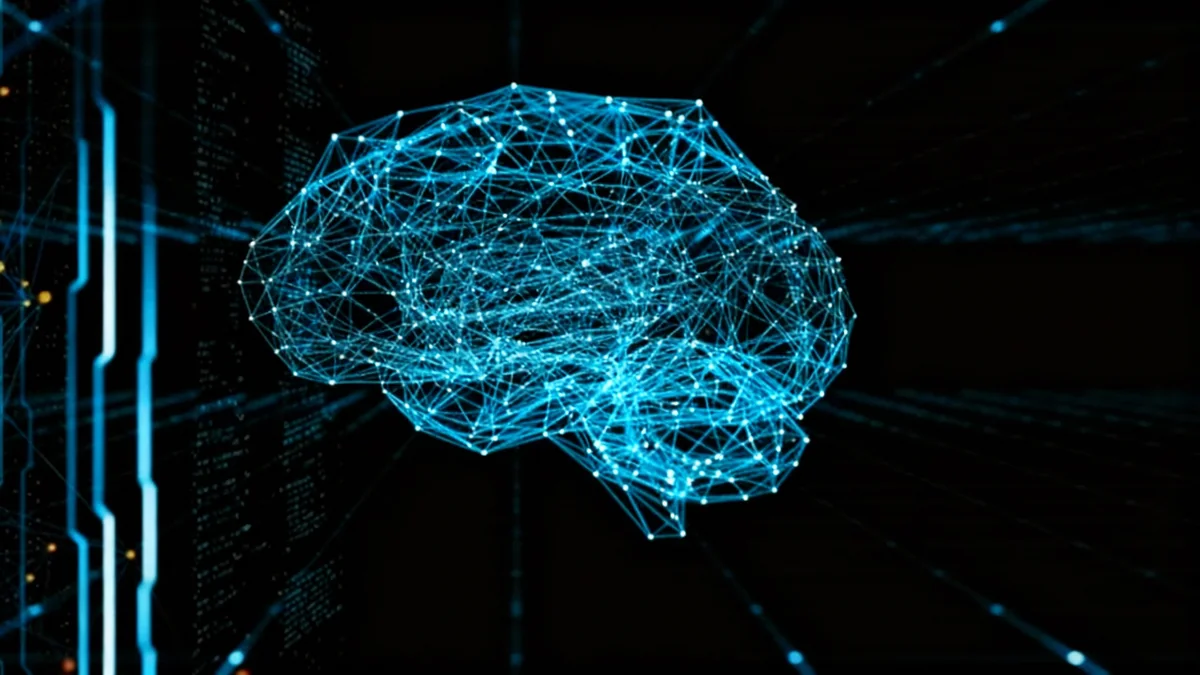Researchers at the University of Surrey have developed a novel approach to artificial intelligence that significantly improves performance by modeling the neural networks of the human brain. The new method promises to make AI systems more efficient and sustainable by reducing their substantial energy demands.
The study, published in the scientific journal Neurocomputing, introduces a technique that could change how generative AI and other advanced models are built, potentially curbing the massive electricity consumption associated with training systems like ChatGPT.
Key Takeaways
- University of Surrey researchers created an AI model inspired by the human brain's wiring.
- The new approach, called Topographical Sparse Mapping, reduces unnecessary connections between artificial neurons.
- This method aims to lower the significant energy consumption of large AI models without sacrificing performance.
- An enhanced version includes a "pruning" process that refines connections during training, similar to how the brain learns.
- The research could lead to more sustainable AI development and advances in neuromorphic computing.
A New Blueprint for Artificial Intelligence
Modern artificial intelligence has achieved remarkable capabilities, but it comes at a high environmental cost. The training process for many of today's largest AI models can be incredibly energy-intensive, consuming vast amounts of electricity.
A team at the University of Surrey has addressed this challenge by looking to a proven, highly efficient system: the human brain. Their work introduces a method that restructures artificial neural networks to operate more like their biological counterparts.
Dr. Roman Bauer, a senior lecturer involved in the project, highlighted the urgency of this new direction. "Training many of today's popular large AI models can consume over a million kilowatt-hours of electricity," he stated. "That simply isn't sustainable at the rate AI continues to grow."
The Problem with Current AI Models
Many conventional AI models use a "fully connected" architecture, where every neuron in one layer is connected to every neuron in the next. This creates a dense web of connections, many of which are redundant or unnecessary. While effective, this approach is computationally expensive and a major driver of high energy use during training and operation.
How Brain-Inspired AI Works
The new approach is called Topographical Sparse Mapping. Instead of connecting every neuron to every other neuron, this model connects each neuron only to those that are nearby or functionally related. This design mirrors the efficient organization found in the human brain, where information is processed locally.
By eliminating the need for a massive number of unnecessary connections, the system can operate more efficiently. "Our work shows that intelligent systems can be built far more efficiently, cutting energy demands without sacrificing performance," Dr. Bauer explained.
An Enhanced Learning Process
The research team developed an even more advanced version of the model, known as Enhanced Topographical Sparse Mapping. This enhanced method incorporates a process inspired by how the brain learns and develops over time.
It introduces a biologically inspired "pruning" mechanism during the AI's training phase. This process is similar to synaptic pruning in the brain, where weaker or less-used neural connections are gradually eliminated, while stronger, more important connections are reinforced. This allows the AI to refine its internal structure as it learns, becoming more streamlined and effective.
Did You Know?
Synaptic pruning is a natural process in the brain that occurs between early childhood and adulthood. It helps the brain become more efficient by removing redundant neural connections, allowing it to adapt and learn more effectively. This new AI model attempts to replicate this highly effective biological strategy.
The Sustainability Imperative in AI
As artificial intelligence becomes more integrated into daily life, from search engines to autonomous vehicles, its energy footprint is a growing concern. The computational power required to train and run these systems contributes significantly to global electricity demand and carbon emissions.
"Our work shows that intelligent systems can be built far more efficiently, cutting energy demands without sacrificing performance."
The University of Surrey's research presents a potential pathway toward more sustainable AI. By building models that are inherently more efficient, the technology could continue to advance without placing an unsustainable burden on energy grids and the environment.
Future Applications and Possibilities
The implications of this research extend beyond improving existing AI models. The team is exploring how their brain-inspired approach could be applied to other areas of technology, particularly in the development of neuromorphic computers.
- Neuromorphic Computing: This is an emerging field that aims to build computer hardware inspired directly by the brain's structure and function. The Topographical Sparse Mapping approach could provide a software blueprint for these next-generation machines.
- More Realistic Models: By more closely mimicking biological processes, these AI systems could lead to a better understanding of the human brain itself.
- Resource-Efficient AI: This technology could enable powerful AI applications to run on smaller, lower-power devices, such as smartphones or IoT sensors, without relying on massive cloud data centers.
The research from the University of Surrey marks a significant step in creating artificial intelligence that is not only powerful but also practical and sustainable for long-term growth.





